Kyoko Ina: "I don't think anyone ever really commits to coaching, it just sort of happens."
 December 5, 2011
By Lena Halonen, Eva Maria Jangbro (EMJO)
Photo © Eva Maria Jangbro (EMJO), Lena Halonen
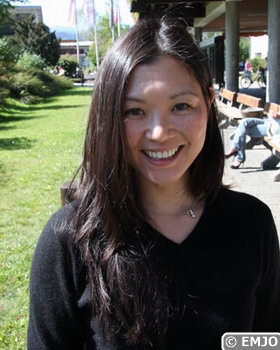 We were very surprised to see Kyoko Ina behind the boards at the Nebelhorn Trophy in Oberstdorf. In past years we’ve gotten used to seeing her doing daring show skating in Stars on Ice with her pair skating partner John Zimmerman. This 2002 World bronze medalist now showed us a whole new side, that of coaching. But how long has Kyoko been coaching and why the Israelite team of Danielle Montalbano / EvgeniKrasnopolski? We had a chat with Kyoko to talk about the past, present and the future.
We were very surprised to see Kyoko Ina behind the boards at the Nebelhorn Trophy in Oberstdorf. In past years we’ve gotten used to seeing her doing daring show skating in Stars on Ice with her pair skating partner John Zimmerman. This 2002 World bronze medalist now showed us a whole new side, that of coaching. But how long has Kyoko been coaching and why the Israelite team of Danielle Montalbano / EvgeniKrasnopolski? We had a chat with Kyoko to talk about the past, present and the future.
We were a bit surprised to see you behind the boards when the Israeli team skated. How long have you been coaching?
I was coaching even when I was competing and usually in the summer. This year I was going to do “Battle of the Blades” in Canada. It is a show where a pair skater is teamed up with a former NHL hockey player. I did it last year and it was great. Boris had asked me if I could help out with the Israeli pair [Danielle Montalbano / Evgeni Krasnopolski]. We skate in the same rink and I said “of course, for one month for sure”. I told Boris I wasn’t going to be available from July on, but then things changed. When I told him I wasn’t going to Canada, he said “Great! Can you coach?” (laughs) So from this summer I started working with this pair.
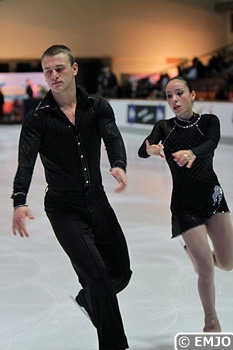 Do you coach any other teams at any other level?
Do you coach any other teams at any other level?
No, this is my first international team. I’ve been helping at the rink so it’s usually been local kids. I love to teach and if someone learns the waltz jump for the first time, or a triple Axel for the first time; it’s the same joy to me. It is exciting no matter what level, all I ask is that you try.
Montalbano / Krasnopolski train at the same rink, but how did you end up coaching them?
I grew up with Galit Chait [former elite ice dancer for Israel with partner Sergei Sakhnovskiy ] in New Jersey. I knew Galit even before any of us made international figure skating careers. So I’ve known Boris for a very long time.
Now I have to ask: who Is Boris? (everybody laughs)
Oh, I’m sorry, Boris is Galit Chait’s father!
Yes, his name was in the information about the competition (the Nebelhorn Tropy), but I didn’t make the connection… Boris Chait is president of the Israeli Ice Skating Federation since 2002.
 If we go back in time, what plans did you have when you finished your eligible career?
If we go back in time, what plans did you have when you finished your eligible career?
After we’d stopped competing we got the “Stars on Ice” contract, and that’s what we wanted to do. In our heads we just wanted to do that as long as possible. I don’t think anyone ever really commits to coaching, it just sort of happens. And once you take on a student, it is not just for a month or a week; it turns into a year or four years. You always work up until the Olympics and then you reconsider. It just turns into a long time project! When I talked to Tamara [Moskvina] she’d always say: ”this is my last one” and this was like four Olympics ago. Every time she’d say: “I’m tired, I can’t do it” and then she’d take on a new team. And I’d tell her: “That’s another four years!”
Are you going to coach the Israeli pair now until Sochi?
Yes, I think so. It is such a new arrangement and we are just learning about each other. They are learning about the way I coach and I am learning 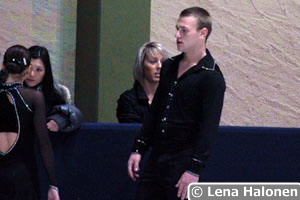 about the way they perform. But they have to be happy in between, and if they are not happy they should of course not be working with me. And if I am not happy I should not be working with them, because then neither of us will get the best of each other. I am committed to them for sure up until the Olympics. But if anything happens between now and then that change things between us, is not fair to either one of us to continue. You always want the best for the skaters.
about the way they perform. But they have to be happy in between, and if they are not happy they should of course not be working with me. And if I am not happy I should not be working with them, because then neither of us will get the best of each other. I am committed to them for sure up until the Olympics. But if anything happens between now and then that change things between us, is not fair to either one of us to continue. You always want the best for the skaters.
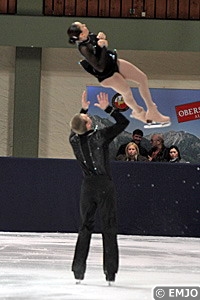 Do you also do choreography and programs, or do you mainly work with the technique?
Do you also do choreography and programs, or do you mainly work with the technique?
Galit is at the rink and she works with the pair full time as well, they have a singles coach and they have a trainer who teaches Pilates and ballet. They have a full program that is good for them. Right now it is the technique I work with. If they can do a certain technique the choreography has to change. Galit is in charge of the choreography and setting the program. I get the final say in everything and I offer suggestions. I tell her what I want and where. And as the elements become perfected with higher points, maybe the choreography has to be more difficult. So we work together as a team. They are still a fairly young pair with a lot of growing to do.
What has changed since you competed, and what do you think about those changes?
Everything has changed! I am learning so much now and I have to study so much more. The elements haven’t changed so much, but there are so many new rules and points. But it is actually easier with the new judging system because I know that if you have a level four, you’ll get so many points. For a level three you’ll have so many points etc. In the old system it depended on the judges. The marks the judges gave me, that’s what counted and there was no arguing. But now I can tell my skaters: “you only got a level one and I can’t ask for five points when you only earned two”. It is clear; there is no question about it with the video and everything right there. So in some ways it makes my job easier, but I have to read so much. There are so many little technical things, but the rules are clear. The GOE is somewhat like the old system. Did you keep the edge? Did you like that position better? The only thing I don’t like are some of the positions they hit, but they have to, to get the points.
Do you think pair skating is more difficult today?
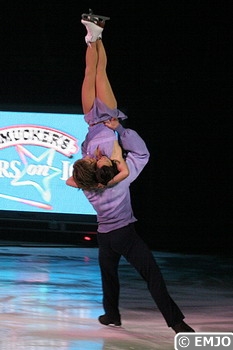 Yes, they are always pushing the limits; it is bordering danger. But they are pushing it in a good way, because of the different positions and all you have to do in order to get the higher levels and points. But I miss a simple solid position up in the air, like when you do an overhead lift. The Russians always had such beautiful posture, and you don’t see that today because they have to change positions. But they are improving even with the more difficult positions; it is evolving!
Yes, they are always pushing the limits; it is bordering danger. But they are pushing it in a good way, because of the different positions and all you have to do in order to get the higher levels and points. But I miss a simple solid position up in the air, like when you do an overhead lift. The Russians always had such beautiful posture, and you don’t see that today because they have to change positions. But they are improving even with the more difficult positions; it is evolving!
How much do you practice these days?
John and I did “Stars on Ice” this year in the winter, and I did “Stars on Ice” in Canada as a solo skater. As professional skaters our practice time has become shorter and shorter. This year we haven’t practiced that much at all. Sometime I skate by myself and sometimes I skate with a pair team.
Will you keep performing as a single skater?
I did that in Canada, and it was scary because I hadn’t done singles in ten years. But I enjoyed it and if the opportunity comes around I will consider it; it is fun to skate and it keeps me in shape too!
What do you do when you are not coaching or skating?
I haven’t had much spare time lately because I just started coaching last summer, and it’s been a full time job. I just jumped into it, and obviously now with all the traveling I haven’t had much time for  myself. But in the past when I did “Star on Ice” in the winter and spring, I would just relax and have fun. I would be at home for a while but coach a little bit for fun, and then I had to start practicing for the shows again. I am just enjoying life and it is nice not to compete and have that stress.
myself. But in the past when I did “Star on Ice” in the winter and spring, I would just relax and have fun. I would be at home for a while but coach a little bit for fun, and then I had to start practicing for the shows again. I am just enjoying life and it is nice not to compete and have that stress.
Do you have any special interests?
(Long pause) Yes, I am a New York City girl; I have been in the city for 30 some years. I love to go to the theatre and I love seeing the arts, like museums. I want to try new restaurants all the time; that’s my new thing. And I try to explore new areas, try, now that I have the time.
When you travel to competitions, do you like to try different restaurants and the local foods?
Absolutely! Except here we have just been going to the same place because it is convenient, it is close by. But ironically, when I was a single skater, the Nebelhorn was my first competition outside the US [it was in 1989 and Kyoko won the gold medal]. Now I am back as a coach for my first pair team. I love it here!
Has it changed much?
No, it hasn’t. It was a long time ago but I still remember the cows, and how I went with the US team to the top of the Nebelhorn Mountain.
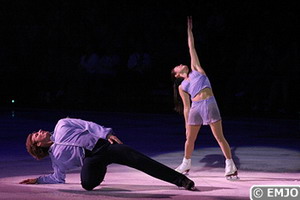
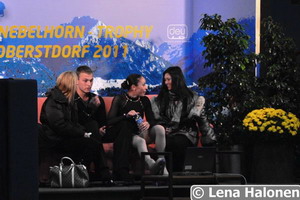
Those of us who are used to seeing Kyoko like this, will now have to get used to this.
Good luck with your coaching job!



